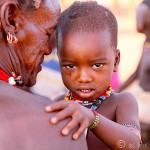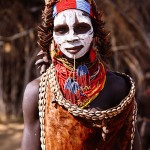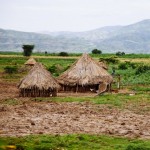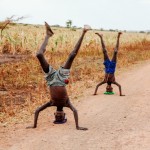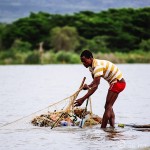Warning — this post contains tribal nudity that may be NSFW. It’s along the lines of what you might find in National Geographic.
Today is our third and final day visiting tribes in Omo Valley, Ethiopia. We depart early in the morning to drive into Mago National Park to seek out the Mursi tribe… but our vehicle won’t start. So we give it a little nudge.
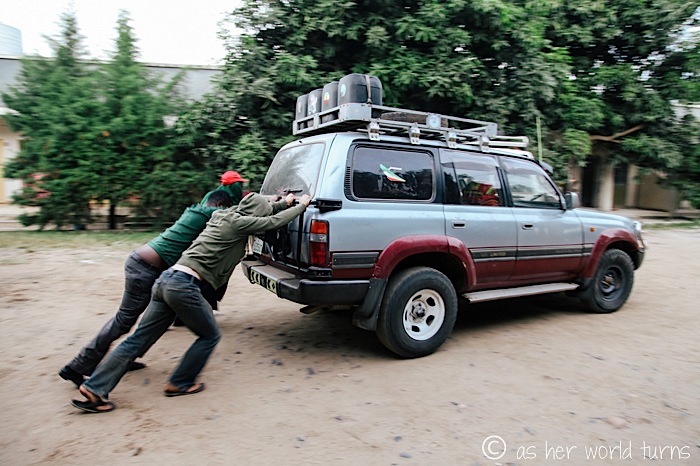
We drive through the river below; the sun has just come up and people are already bathing.

The whole morning drive is maybe two hours. We stop at the park entrance to pick up an armed escort, which is required when traveling through the park. My friend Mike tells me this is because neighboring countries require it — because there are big game parks in those countries — and Ethiopia latched on to the idea even though they don’t have game parks. It feels sort of silly to drive around with a guard and gun, but that’s the way it is.
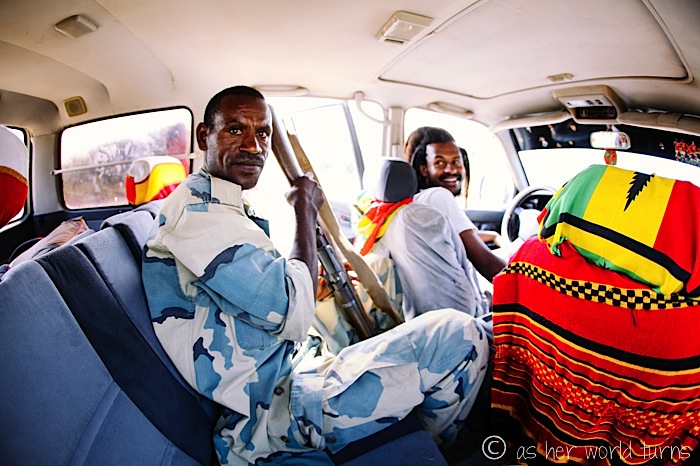
The views are quite stellar:
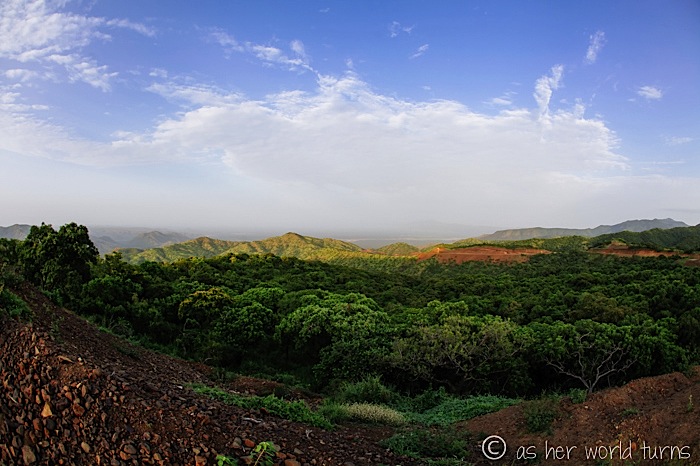
After checking a few locations, we find a Mursi tribe to visit.
We’d been warned by our Aussie friends that the Mursi tribespeople are the most aggressive. “Not possible!” says Mike, following our encounters the previous day with the Hamar and Karo tribes. But it proves true.
The reason we’re here so early in the day is because the Mursi tribespeople tend to be drunk and even more aggressive by mid-day, when they might start grabbing at cameras or visitors themselves. They don’t have much to do here which is why drinking is a common pastime. So we visit in the morning.
Sure enough, the tribe has surrounded our vehicle before Tezera even cuts the engine. I’m suddenly grateful for the armed escort’s presence — he walks around with us as the local guide (who we picked up back in Jinka) shows us the tribal living areas.
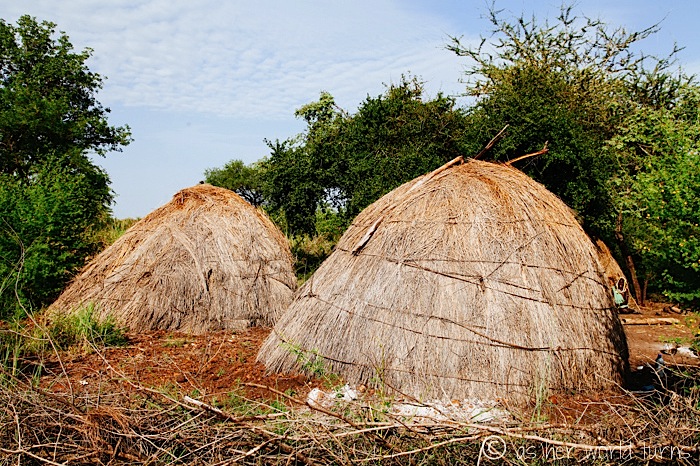
As you might imagine, these huts don’t last long in rain storms and have to be rebuilt often.
The local guide tells us that the tribe only eats two meals a day, one in the morning and one at night. There’s not enough food for a mid-day meal. They make their own alcohol from grain.
Before I continue, I should mention that the Mursi tribe is visibly distinguished by giant lip plates — often as big as saucers — worn by female members. You’ll see them shortly.
More so than the previous tribes we visited, the Mursi people seem to have a costume box where they pull out elaborate headgear and necklaces to attract photo tips. Tribespeople seem to rotate these adornments to increase their odds of tips — how sneaky! It’s not until I sort through the photos later that I realize I photographed some people more than once because they changed their look mid-visit. This is hardly a natural experience… it’s a full-blown performance.
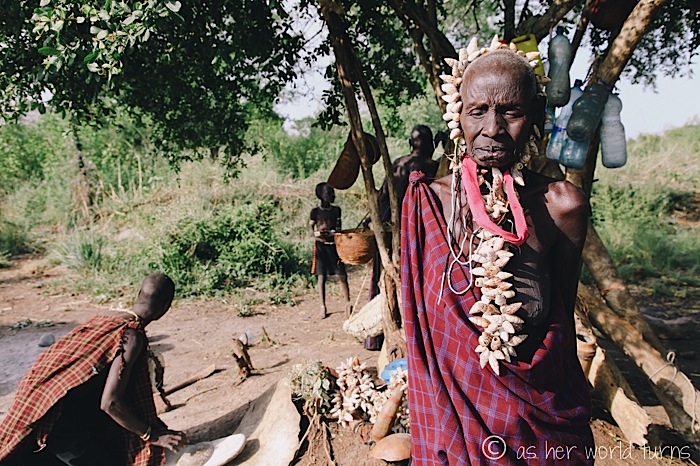
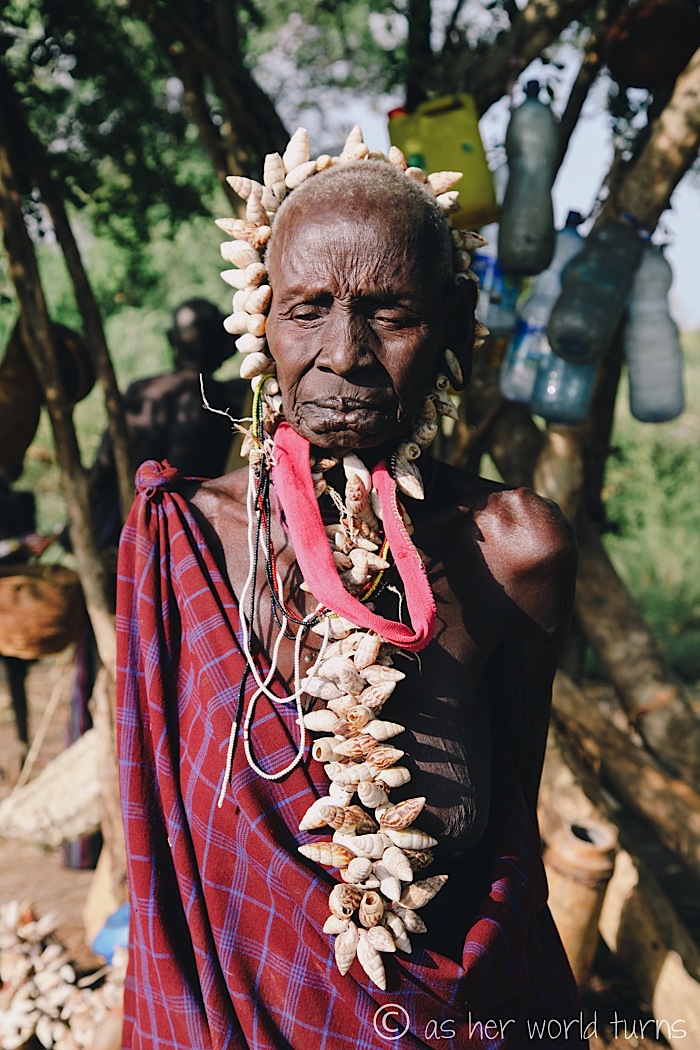
I find this headgear to be the most eye-catching — dried plants wrapped around bull horns. You’ll also notice this woman is not wearing a lip plate, but her lips have been cut to accommodate one (this happens around age 15 or so).
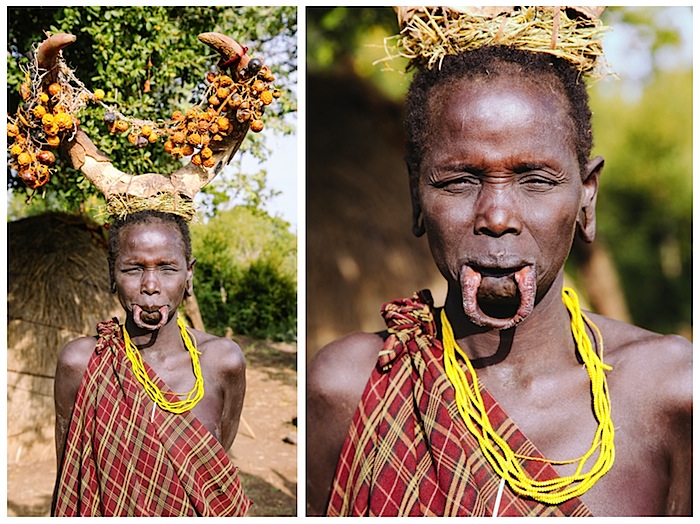
A fellow tribes person reminds her to put in the lip plate, and she does.
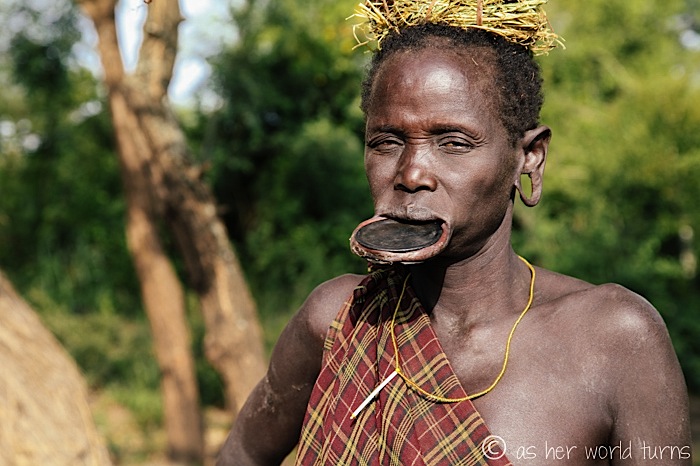
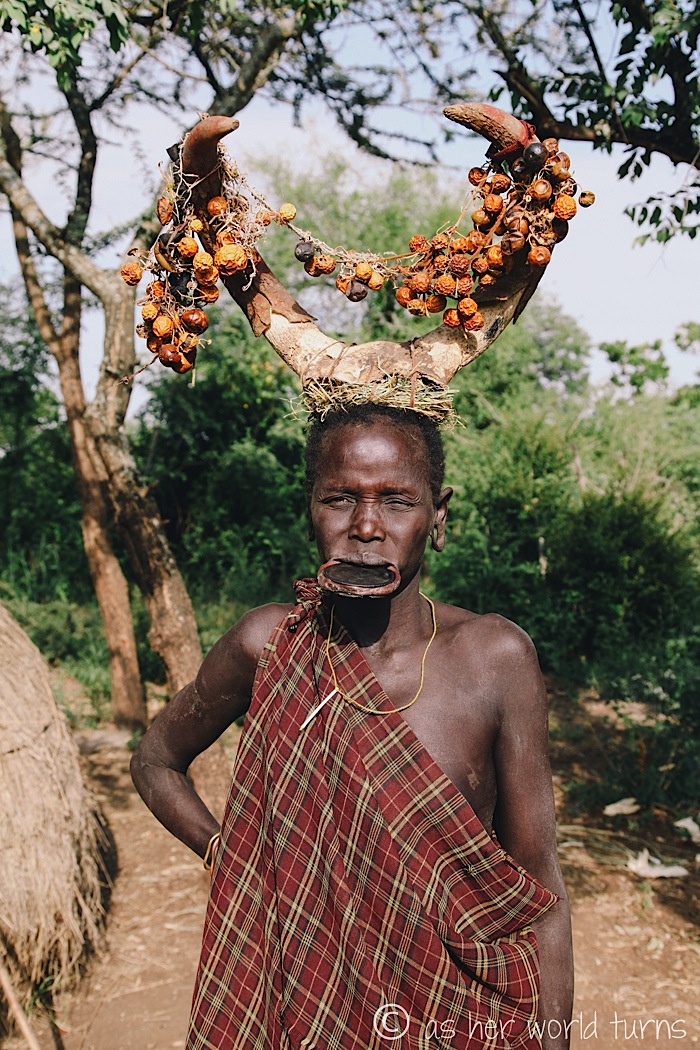
After our first few tribe visits, I’m less hesitant with this photo tipping business. I photograph most of the members here over the course of our 25-minute visit.
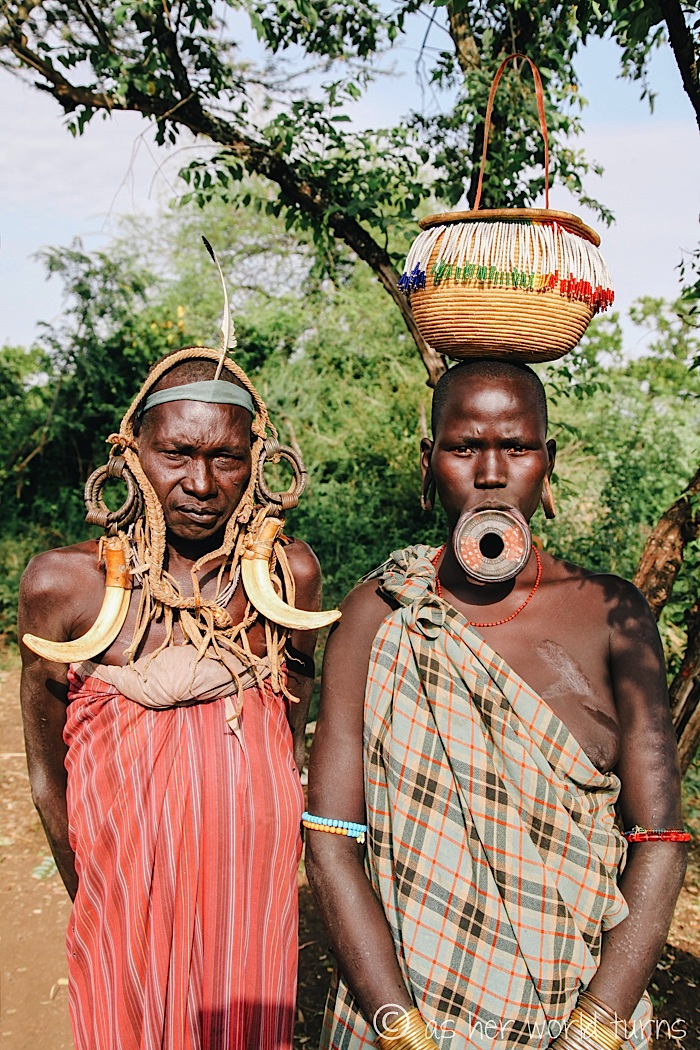
These young men proudly pose with their weapons.
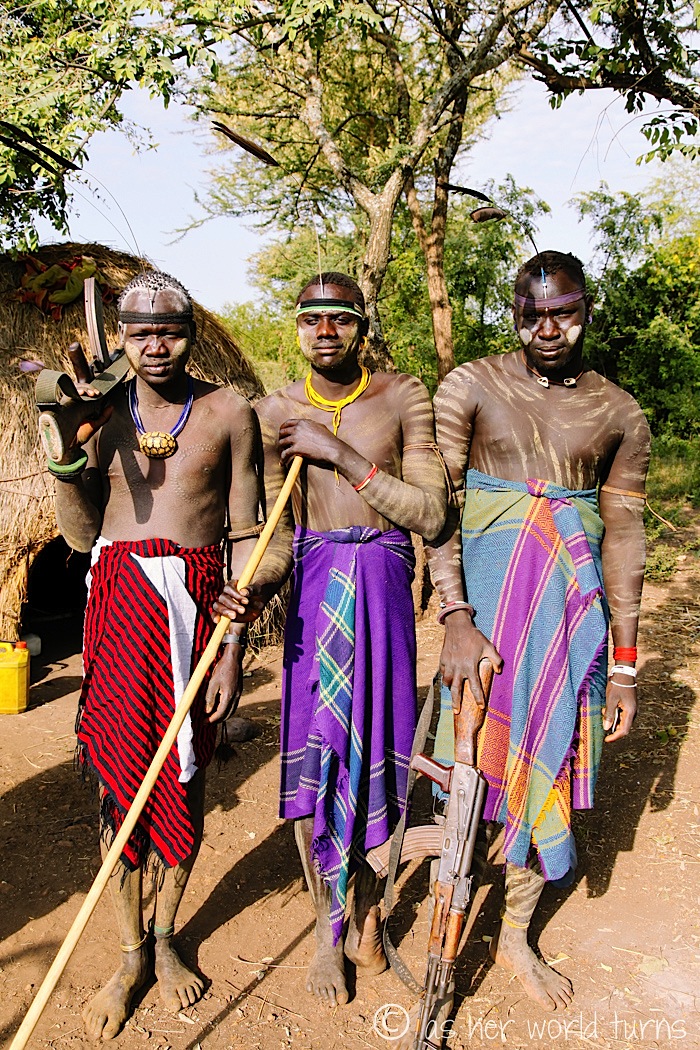
Most of the time the tribespeople are stoic, but occasionally they crack a smile and their faces light up.
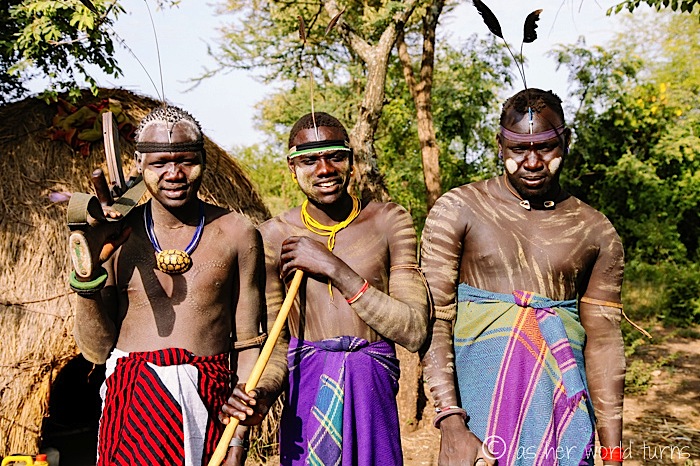
Most of the members have some form of chalk paint on their bodies. Again, this is all about photo tips. Their ‘costumes’ do have roots in cultural tradition, but on any given day they are dressed up on the chance that tourists with cameras will stop by. I’m not sure how often they receive visitors — probably not every day, as the local guides rotate between the various tribes throughout any given area. For example, there are many Mursi tribes within this park; we just visit one of them. They are ready and waiting just in case, with not much else going on. How else might they focus their time and energy if these visits ceased?

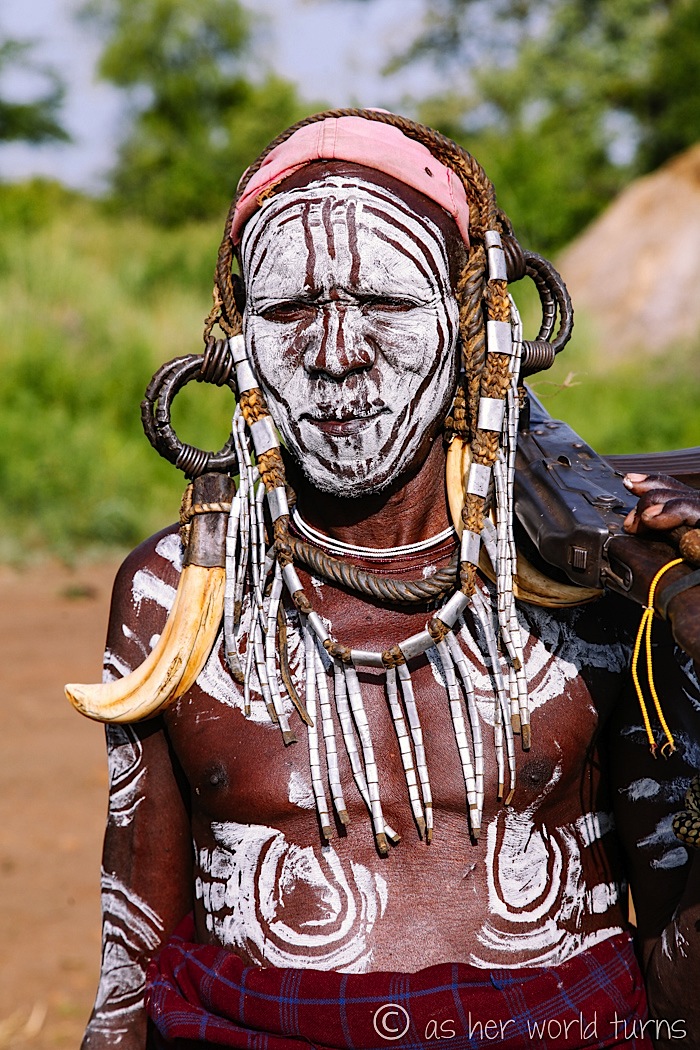
I’ve been so intent on snapping portraits that it doesn’t occur to be to use my fisheye lens until now. Here’s my Mursi tribe selfie:
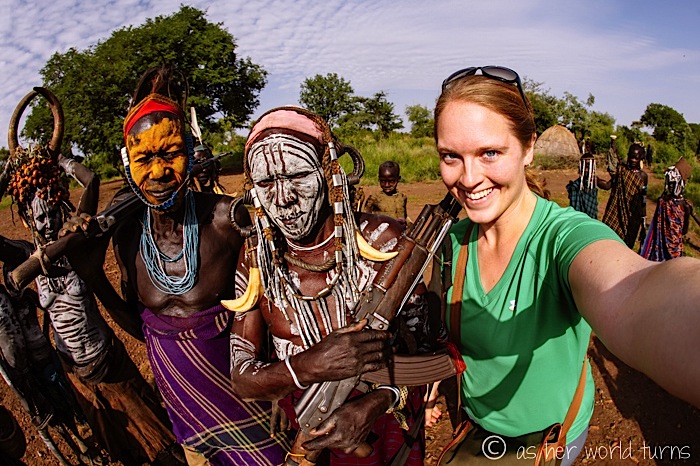
Another elaborate headpiece made out of bull horns:
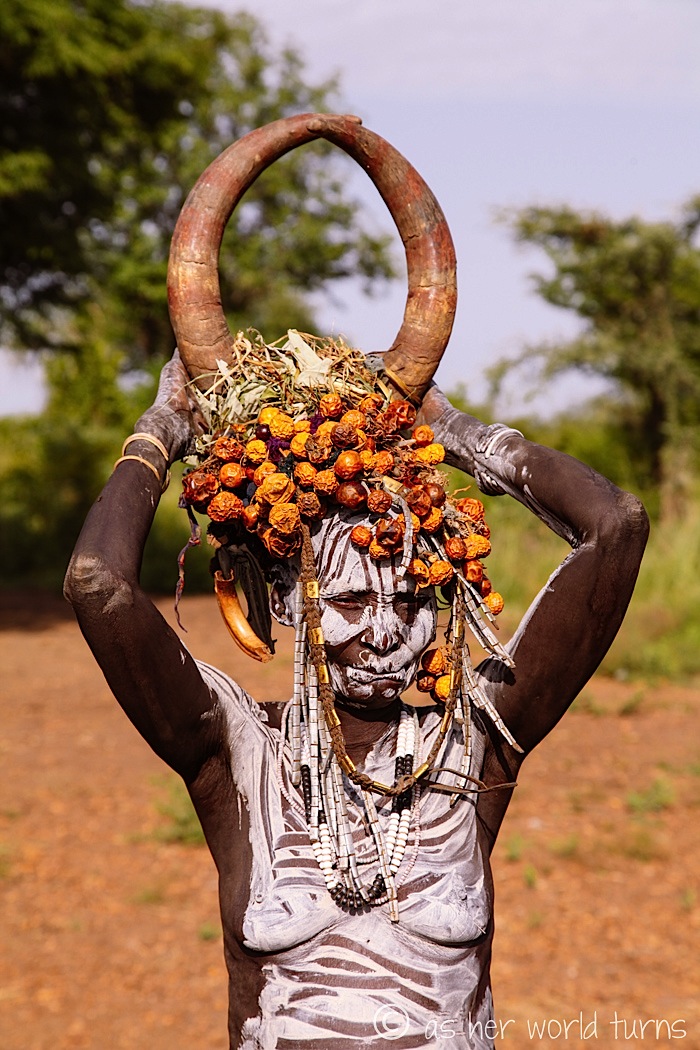
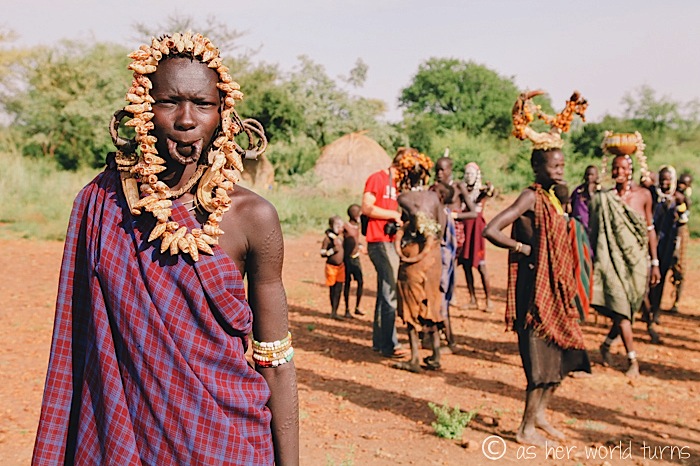
This young woman’s lip droops low without a lip plate.
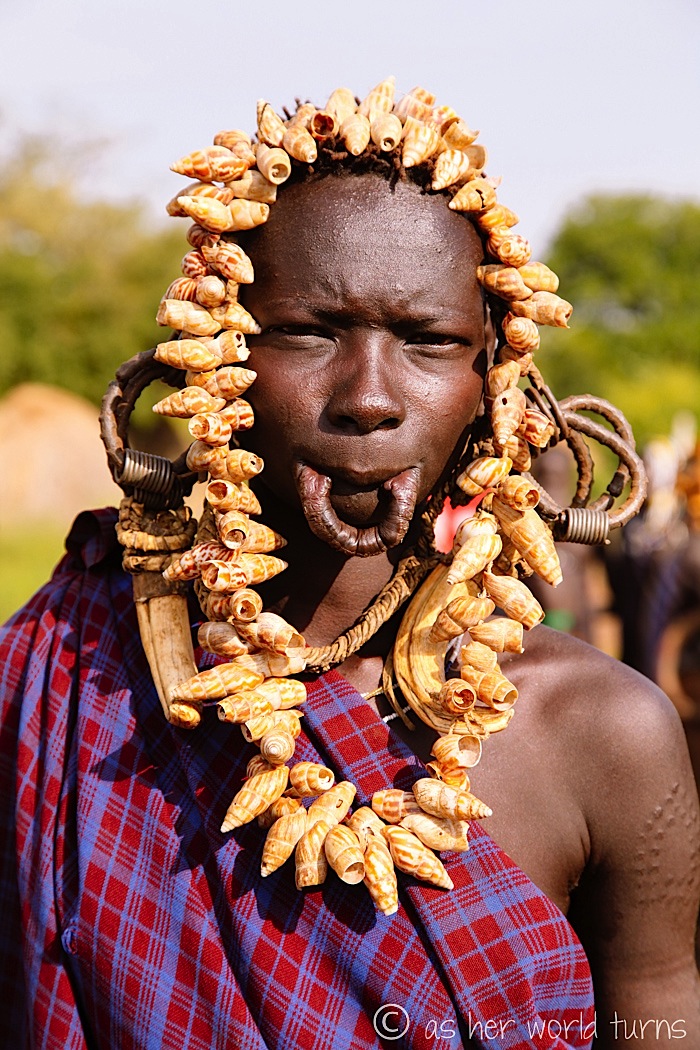
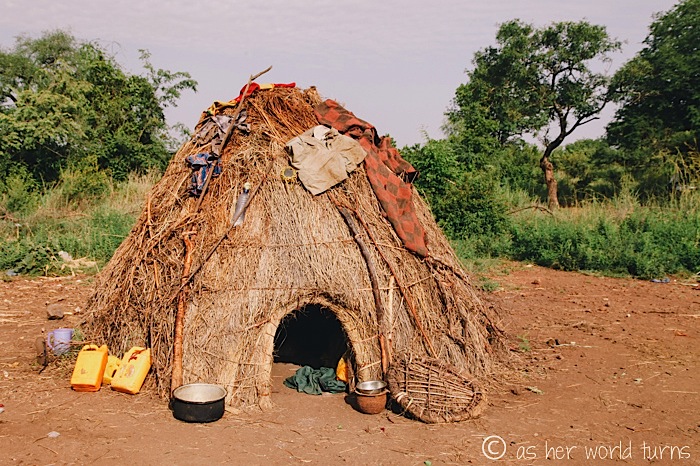
Some images from their living areas. They have a visitor when we arrive, a local person selling (or trading) products like salt, dried legumes, and medicine, if I recall correctly.
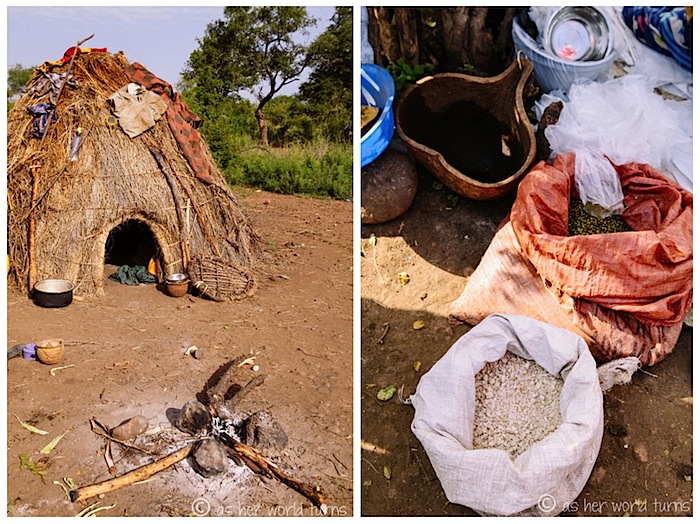

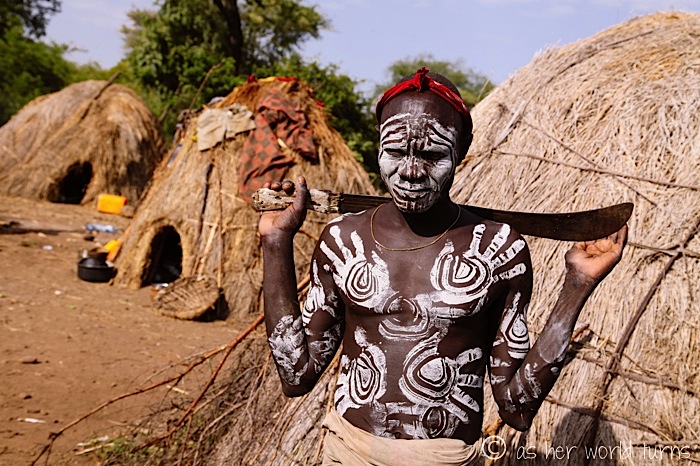
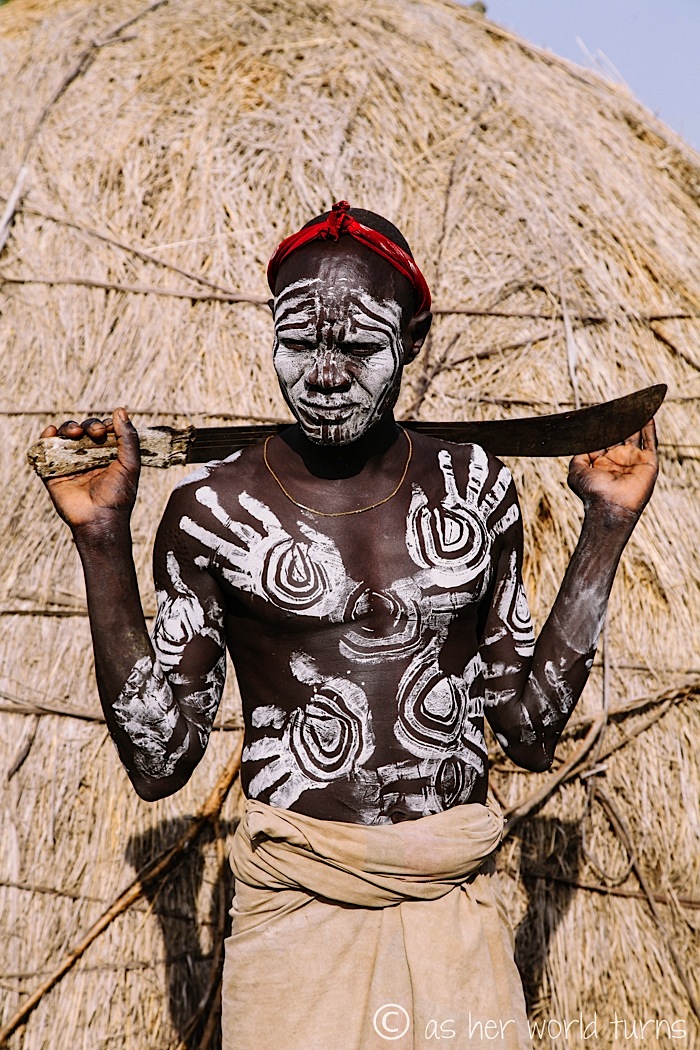
I find this next young woman to be incredibly striking.
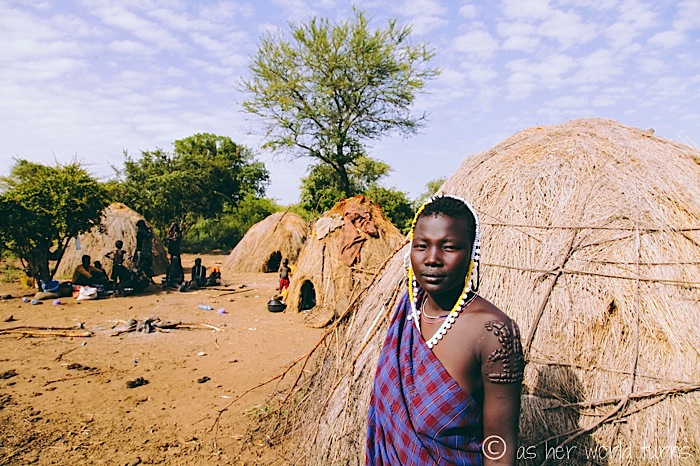

She cracks a smile while I’m photographing her. Beautiful.
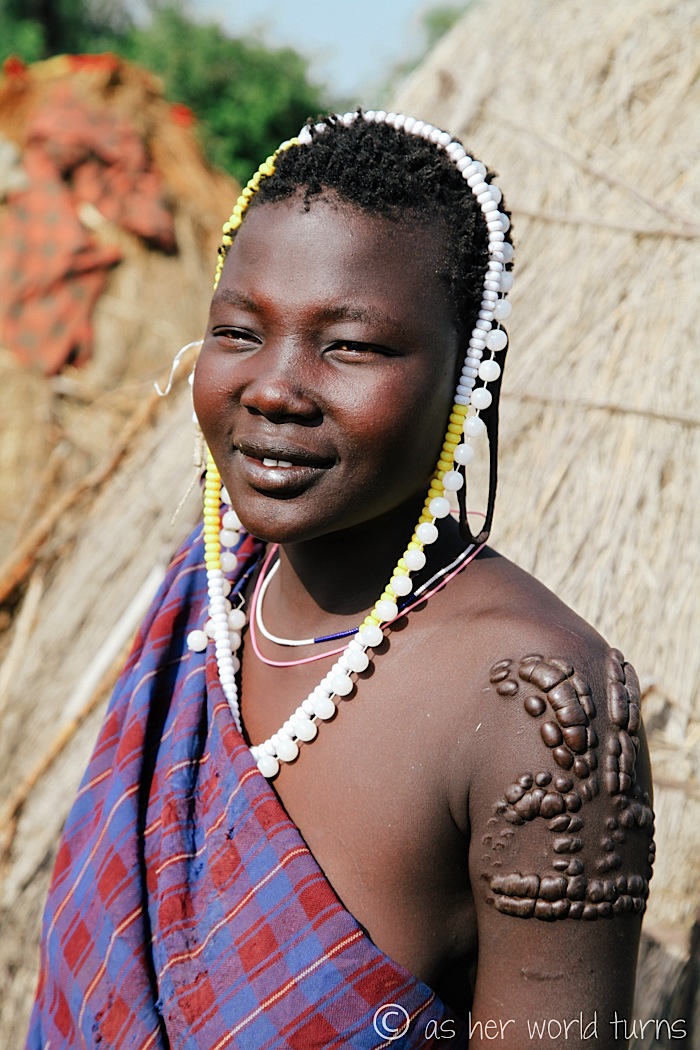
Some details from her skin etchings and jewelry:
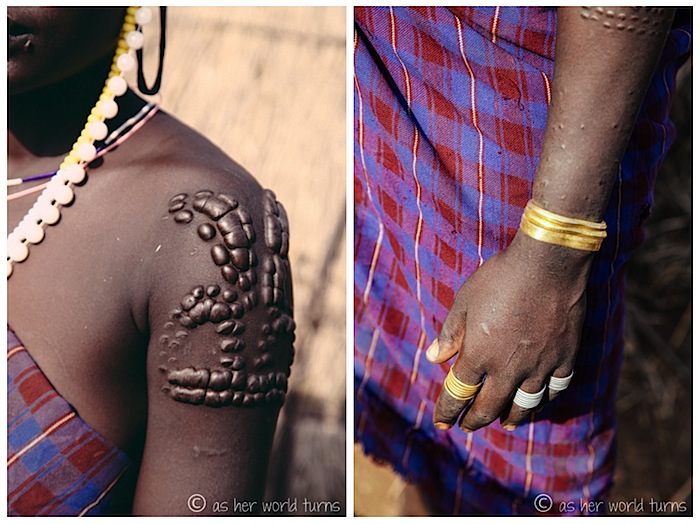
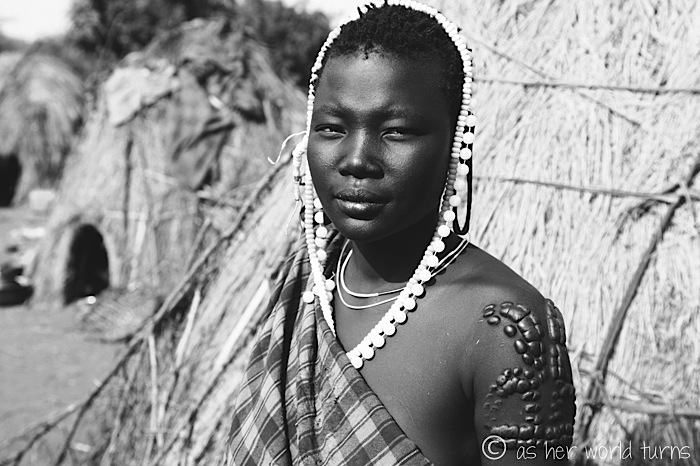
I debated whether it’s exploitative to share an image of a woman and her suckling child, as it feels too personal, like I’m breaking a code of conduct. But we encounter this multiple times during both the Karo and Mursi tribe visits — women wearing their children around their waist, positioned so they may freely suckle when they feel like it. The mothers are not remotely private about it and, in fact, are probably showing off for extra tip money (tribespeople get 5 birr per photo, but mothers with babies get 7 birr). So am I taking advantage of their position of needing tip money by photographing what might otherwise be a personal moment? Or can I consider it acceptable to document a natural part of daily life? I feel like I’m walking an ethical minefield in deciding what to share or not share on here.
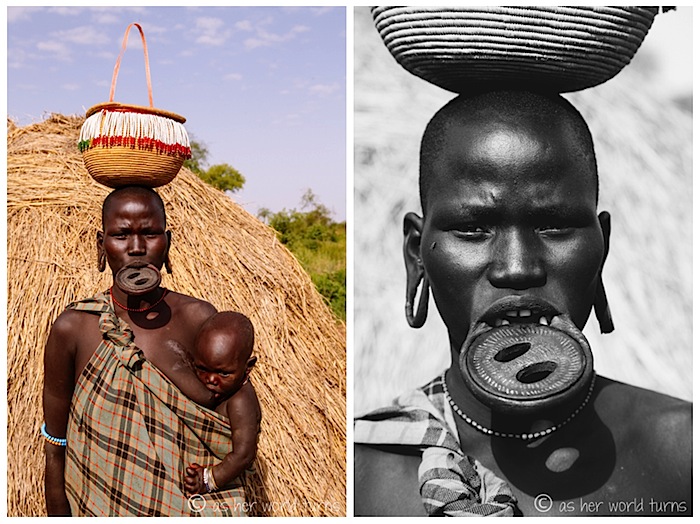

This woman shows off her lip plate with pride, or perhaps just excitement for tip money. I’ll discuss this more thoroughly in a moment.
Note that her two bottom teeth have been knocked out to accommodate the lip plate. This is common.
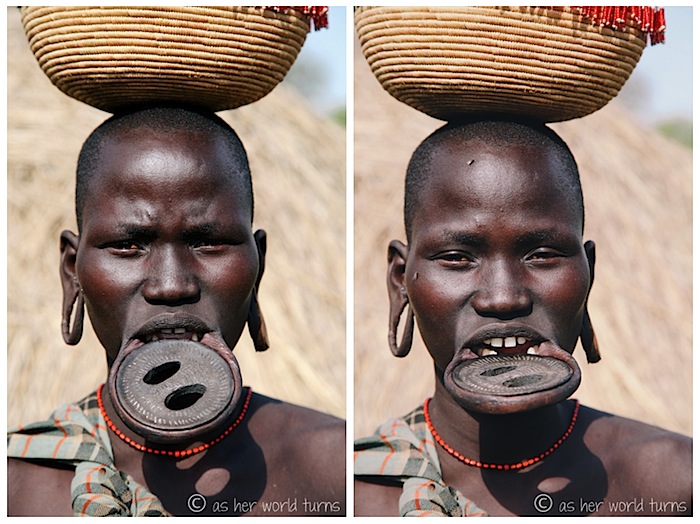
Our drive Tezera poses with a lip plate below. Another tribeswoman shows off her lip plate, the largest I’ve seen on this visit.
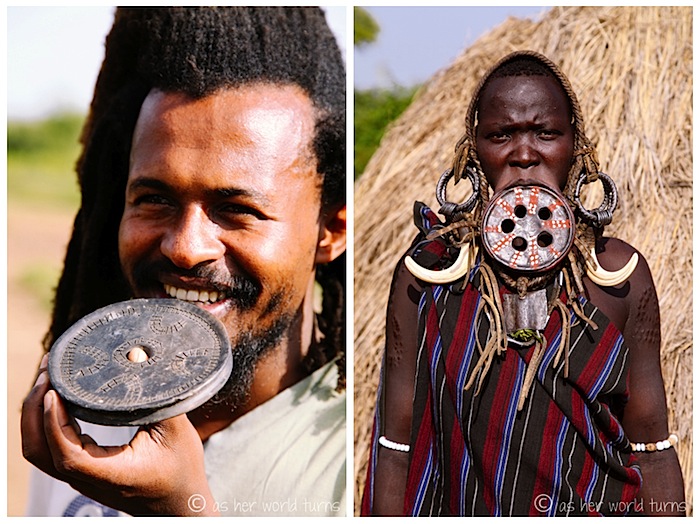

Okay, let’s dive into this lip plate “tradition” for a moment.
The Mursi people are among the final tribes in Africa to still wear lip plates. It’s an outdated custom that has been done away by other tribes. Yet with tourists passing through often, the Mursi women continue to practice cutting the lips of 15 year old girls to wear these plates. How much of this is driven by tourist photo tips vs. cultural tradition? It’s impossible to know so long as tourists continue to visit. I also find it disturbing that this is exclusively a female tradition, and wonder if they receive pressure from the males in the tribe to continue wearing lip plates for photo tips that will ultimately be shared with the men.
Prior to visiting Omo Valley, I pictured photographing these tribes in their natural element, but that’s hardly how it’s turned out. Our visit feels exploitative — especially with the Mursi tribe, as I wonder if this painful-looking practice is still in place for tourists like ME. How horrible to think that each tourist visit might reinforce tribal perception that current 15-year-old girls need to have their lips cut to keep the photo tips coming.
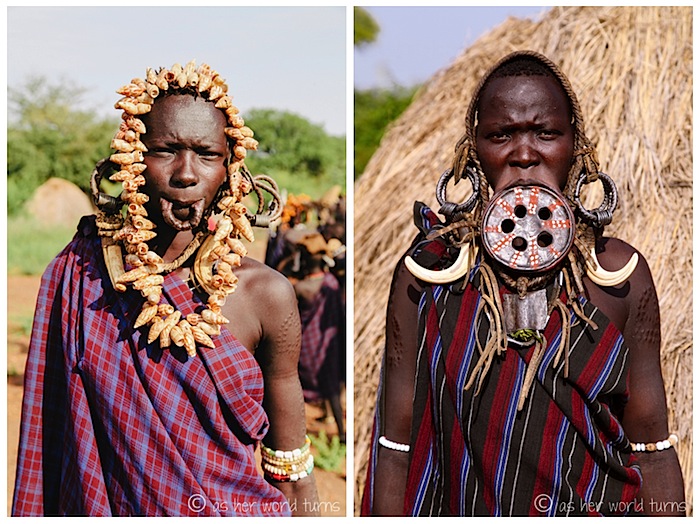
Beyond the lip plates, seriously consider what I wrote above — how might these tribes focus their time and energy if tourism visits stopped? I suspect they’d benefit more without the photo tips, as they’d have to work together to figure out how to sustain their existence through additional farming or cattle raising or other options. It might be a rocky transition but ultimately could transform their tribe for the better.
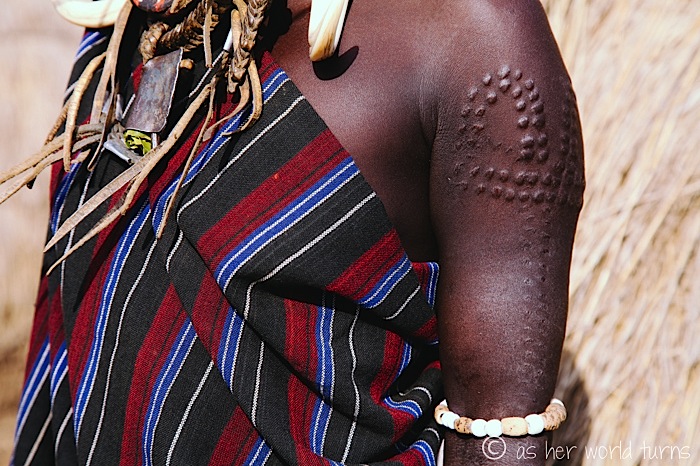
We depart the Mursi tribe and drive back towards Jinka. A few more countryside photos:

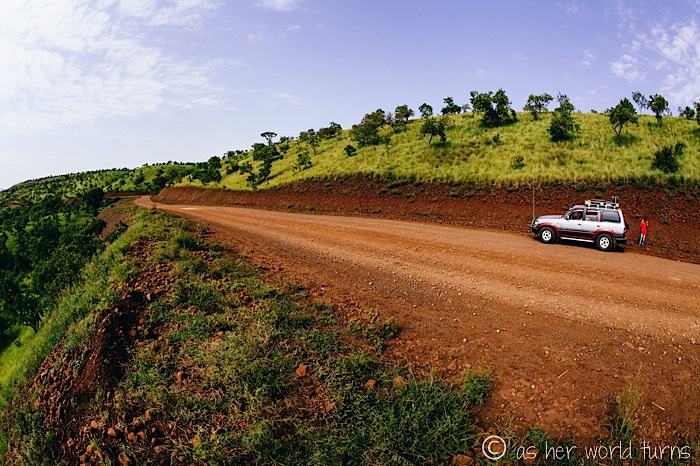
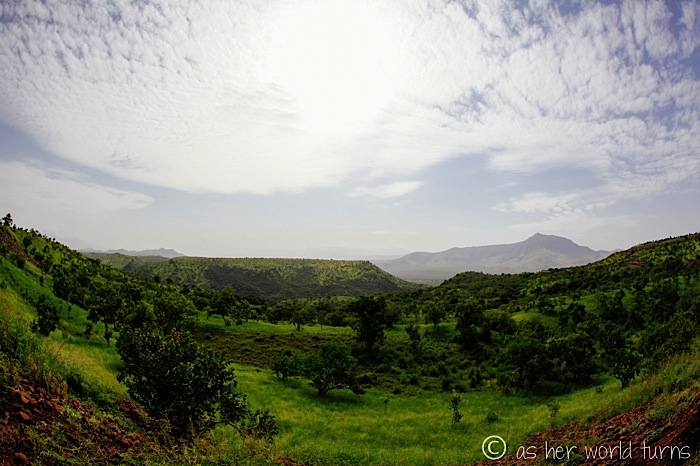
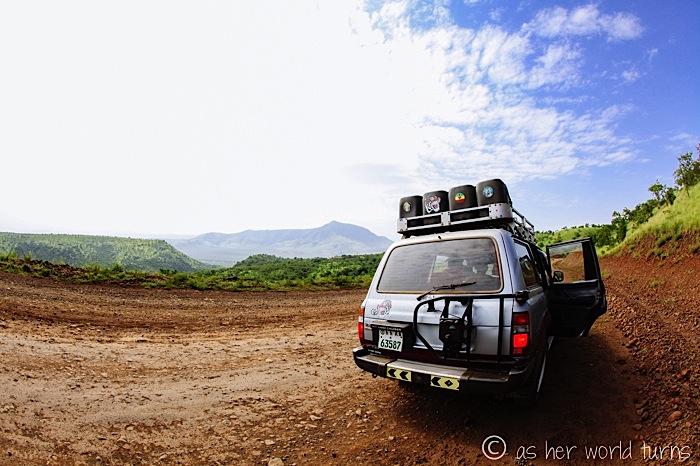
This post became heavier than I intended, but it raises some important questions about the state of these rural tribes and tourism in southern Ethiopia. There are similar concerns for other tribes around the world; this is just my first time witnessing it first-hand.

